Caching is one of the ways for performance improvement. Windows Azure uses caching to increase the speed of cloud services. Content Delivery Management (CDN) puts stuff like blobs and other static content in a cache. The process involves placing the data at strategically chosen locations and caching it. As a result, it provides maximum bandwidth for its delivery to users. Let’s assume an application’s source is far away from the end user and many tours are taken over the internet to fetch data; the CDN offers a very competent solution to improve performance in this case. Additionally, it scales the instant high load in a very efficient manner.
Create a CDN
Step 1 − Login in to your Azure Management Portal.
Step 2 − Click on 'New' at bottom left corner.
Step 3 − Select ‘APP Services’ then ‘CDN’.
Step 4 − Click on ‘Quick Create’. The following screen will come up.
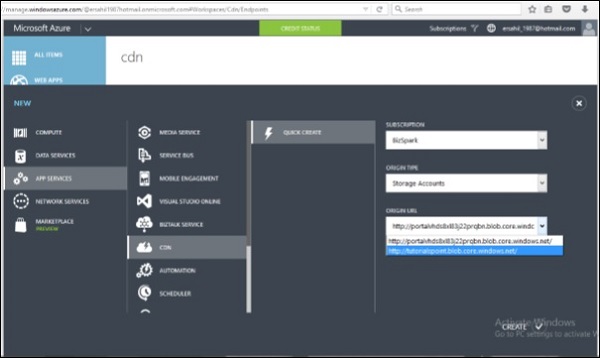
You will see three fields in the pop up −
- Subscription − There will be a list of subscriptions you have subscribed to and you can choose from one of them. In this demo, only one option was there in the subscription dropdown, which was ‘BizSpark’, the current subscription.
- Origin Type − This dropdown will ask to select an origin type. The integrated service will have an option of Web Apps, Cloud Services, Storage and Media Services.
- Origin URL − This will show the URLs based on the chosen origin type in the dropdown.
Step 5 − Choose one of the options from each dropdown as needed and click ‘Create’. CDN endpoint is created as show in the following image.
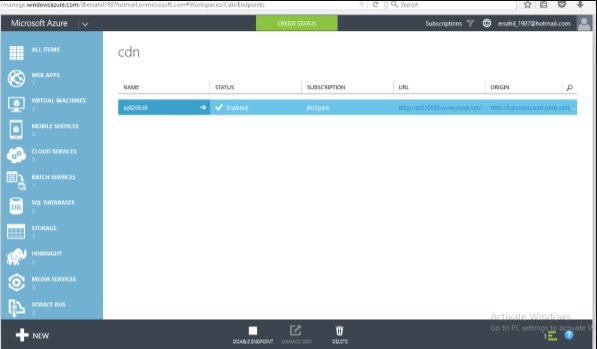
Create CDN for Custom Origin Links
In June 2015, CDN was updated with one more feature where users can specify a custom origin. Earlier only Azure services could be linked to CDN, but now any website can be linked to it using this service.
When we are create a CDN service, in the ‘Origin Type’ dropdown, there is an option ‘Custom Origin’ as shown in the following image, and then you can specify the link in the URL field.
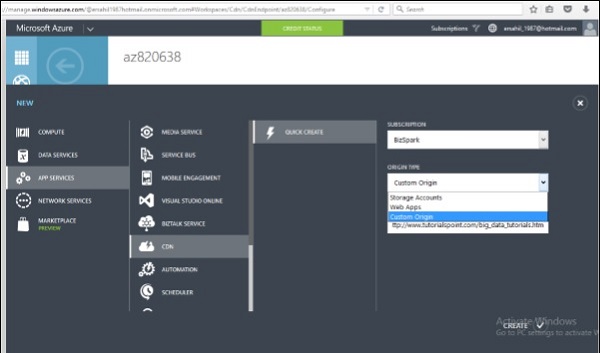
Manage CDN
Step 1 − Click on the Name of the CDN you want to manage in the list displayed in CDN services.
Step 2 − Click on ‘manage cdn’.
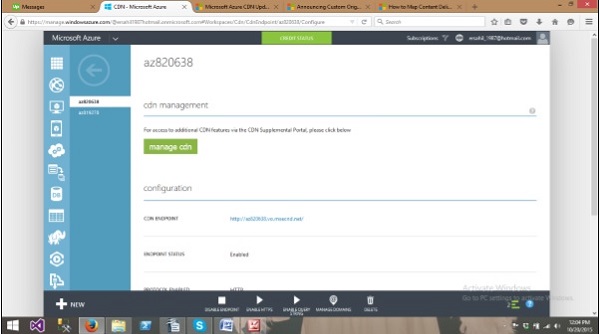
Country filtering − You can allow/bock your website in specified countries. This is going to protect your data for better.
Step 3 − When you click on ‘manage cdn’ you will be taken to the following page in a new tab of your browser.
Step 4 − Click on ‘Country Filtering’ from menu items at the top of screen. Click on ‘Add Country Filter’ button as shown in the following image.
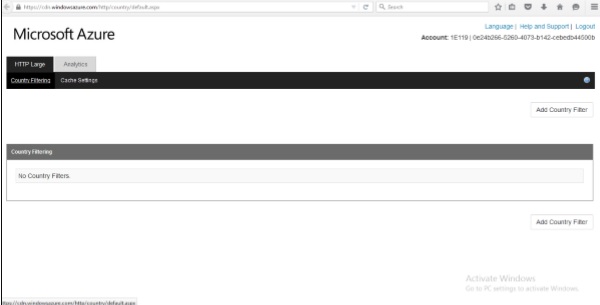
Step 5 − Specify the directory and select Allow/block.
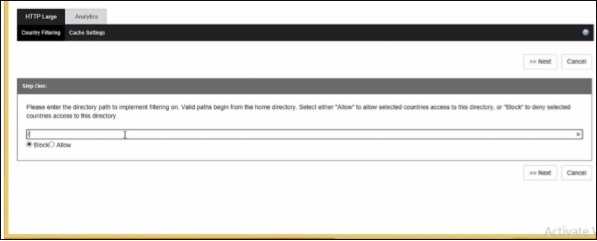
Step 6 − Select the country in the next screen and you are done.
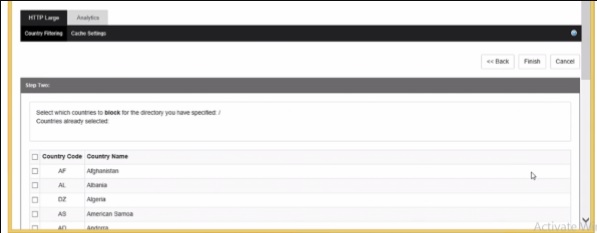
Compression − It allows files to be compressed. You can enable/disable compression. Also you can specify the file type.
Step 7 − Click on ‘Cache Setting’ and scroll down to the bottom of the page.
Step 8 − Select ‘Compression Enabled’ and click ‘Update’ button. By default, compression is disabled.
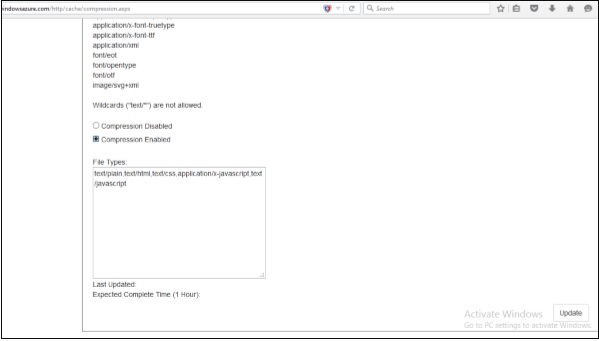
Analytics − You can see very useful figures in this section. For example, number of overall hits or in a specific geographic region. The report will also show how many times requests are served from CDN endpoints and how many of them are going back to the original server.
Step 9 − Click on ‘Analytics’ in menu items at the top of the page. You will see a list of all the reports in the left panel as shown in the following image.
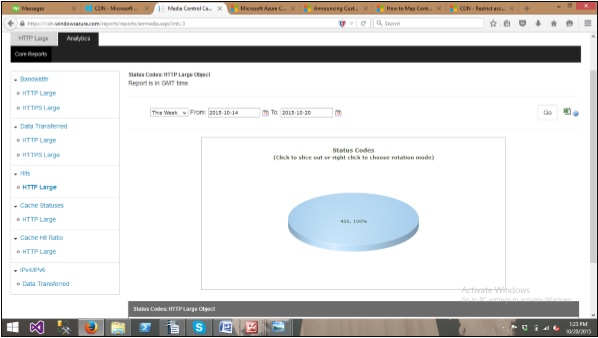
Step 10 − Additionally, you can download the report as an excel file by clicking on the excel icon at the top right corner.
Map a Custom Domain Name
You might want to use a custom domain name instead of CDN endpoint that is autogenerated by Azure service. Windows Azure has provided a new feature that allows you to map a custom domain name to his application’s CDN endpoint. Let’s see how it is done in Azure Portal.
Step 1 − Click on ‘Manage Domain’ Button on the bottom horizontal menu.
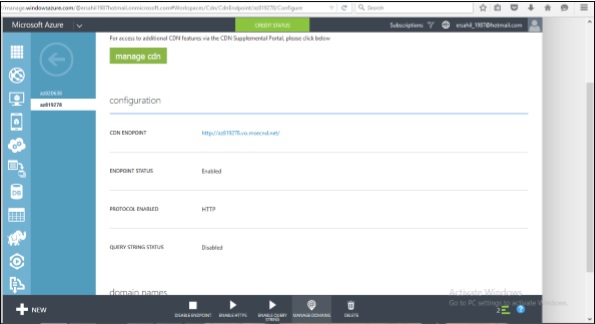
Step 2 − Enter the custom URL in the text box and its done.
No comments:
Post a Comment